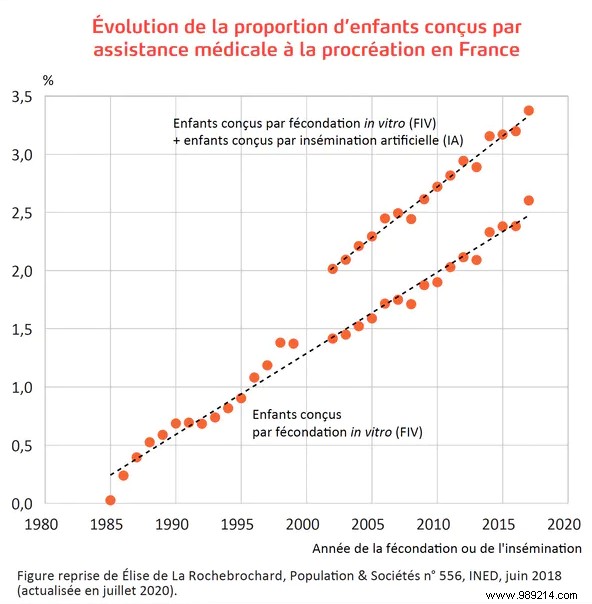The world's first "test tube baby" was born in 1978 in the UK. Since this birth, medically assisted procreation has continued to progress. Today in France, approximately one in thirty children comes from one of the different forms of assisted reproduction.
Medically assisted procreation (MAP) is a set of clinical practices and biological in which medicine intervenes in procreation. The two main practices are in vitro fertilization (IVF) and artificial insemination (AI), the latter often falling under gestational surrogacy (GPA).
If surrogacy concerns the implantation of an embryo in the uterus of a third woman (surrogate mother), IVF is very different since it is a question of fertilization of an egg by a sperm outside the female body . Everything actually happens in the test tube of a biologist (in vitro).
British Louise Brown, the world's first "test tube baby", turned 42 on July 25, 2020. The first child of her kind of French nationality is named Amandine, born February 24, 1982. These births opened a new chapter in medicine relating to the treatment of infertility. Indeed, it was previously mainly about artificial insemination. It involved depositing the spermatozoa – from the spouse or from a donor – at the level of the cervix (or in the uterine cavity). The sperm then fertilized the oocyte in a natural way.

Since these first in vitro fertilizations, the practice has continued to increase , according to a report published in Populations &Societies (PDF in French / 4 pages) in June 2018. In France since the 1980s, the number of children conceived by IVF increased by 0.5% every 7 to 8 years. As shown in the graph below, this is a very linear rhythm.
Today in France, 2.5% of children (i.e. one in 40) come from in vitro fertilization. This percentage can be extended to 3.5% (i.e. one in 30) by adding children conceived through artificial insemination. To illustrate this proportion, imagine a school class. We would find there on average a pupil conceived either by IVF or by AI.

Research in assisted reproduction continues still. In 2019, British researchers touted the merits of older sperm during fertilization. It would be to obtain individuals with better characteristics related to reproduction and longevity.
In 2017, an Australian start-up had developed a new method for selecting embryos. However, this was based on artificial intelligence and deep learning. The goal? Sorting embryos from IVF more efficiently before implantation in order to obtain a better chance of success.